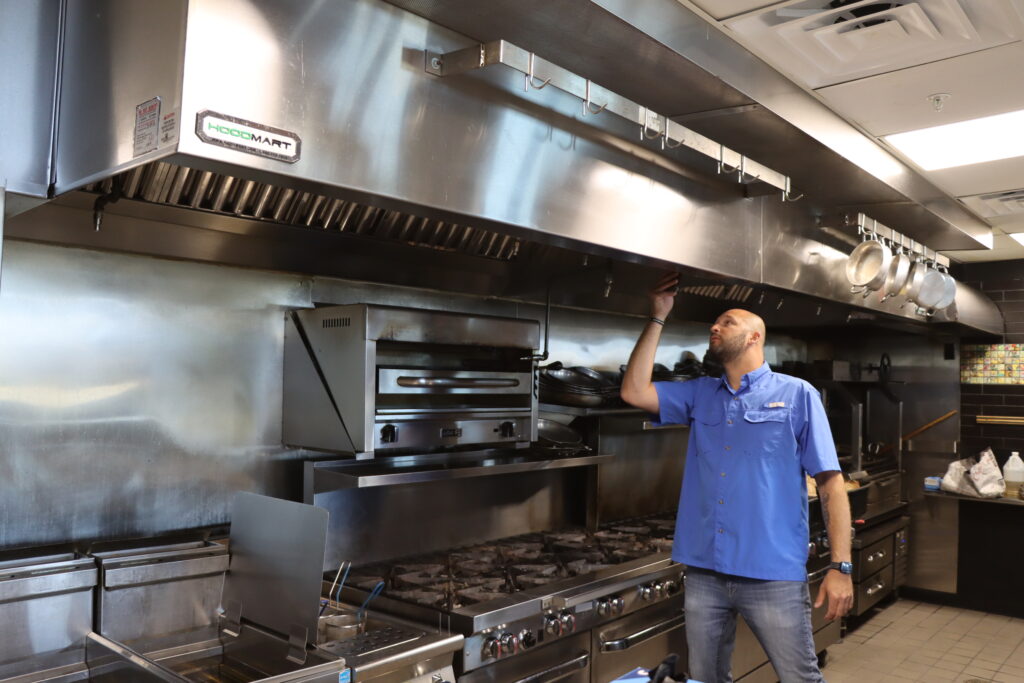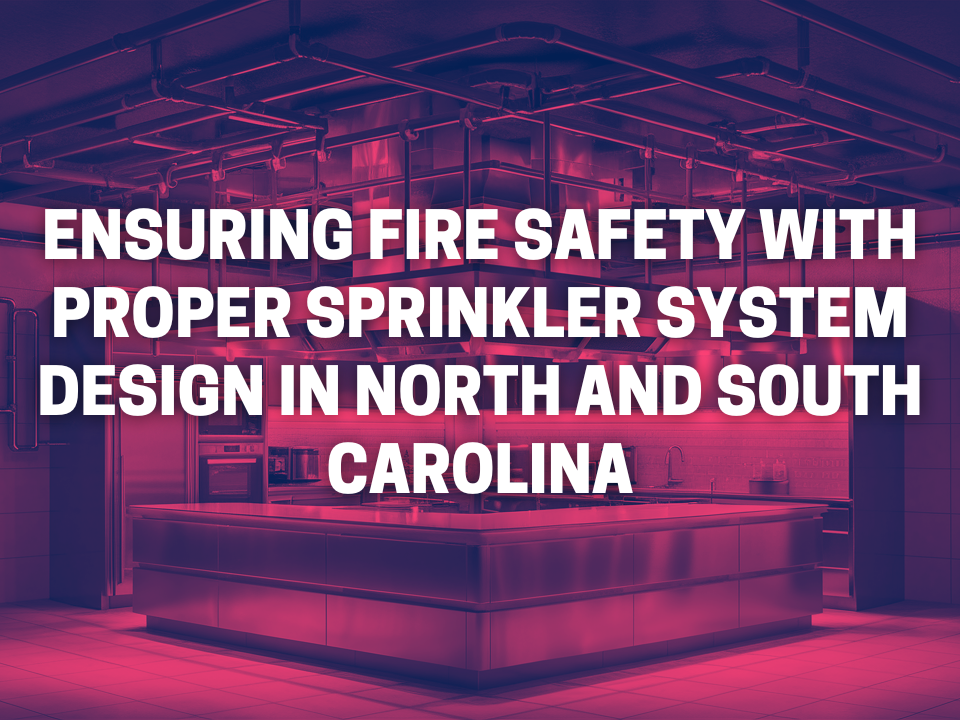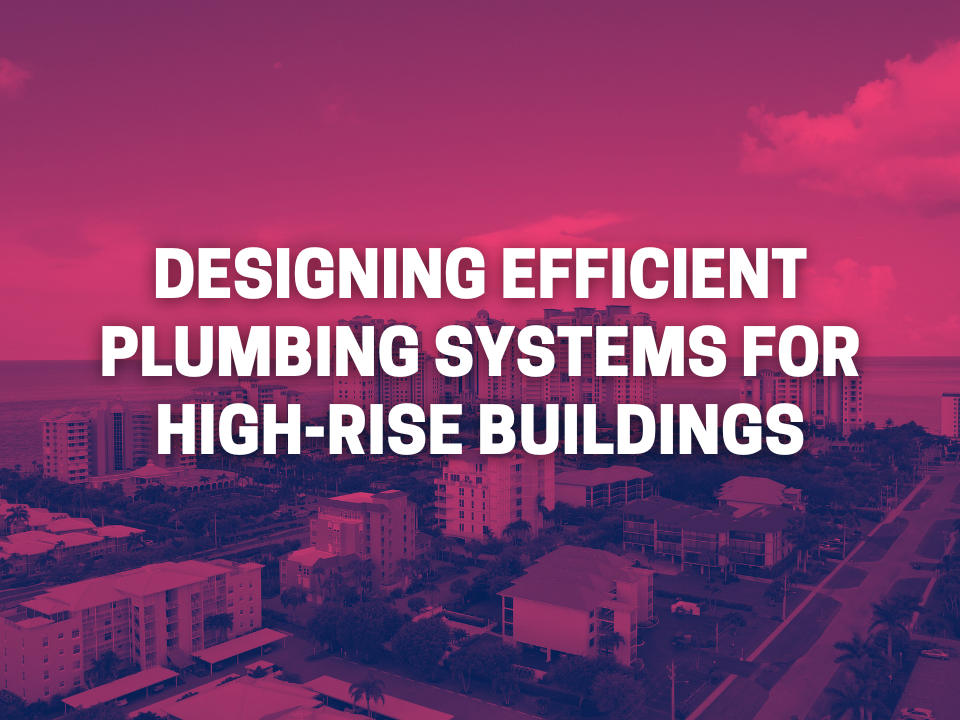Proper ventilation in commercial kitchens is crucial for maintaining a safe and comfortable environment. At Gunderson Engineering PLLC, we specialize in designing efficient and compliant ventilation systems tailored to the unique needs of commercial kitchens across North and South Carolina. In this blog, we will identify common problems in kitchen ventilation and provide expert solutions to prevent them.

Common Problems in Commercial Kitchen Ventilation
Inadequate Airflow
- Problem: Insufficient ventilation results in poor air quality, unpleasant odors, and excessive heat accumulation, creating an uncomfortable and potentially hazardous kitchen environment for staff.
- Technical Solution: Implement high-capacity exhaust hoods and supply air fans engineered for commercial restaurant applications. Properly calculate and balance the cubic feet per minute (CFM) of exhaust and supply air to maintain neutral pressure in the kitchen.
- Example: For a high-volume restaurant kitchen, determine the required airflow by calculating the total CFM based on the cooking surface area and type of equipment (e.g., fryers, grills, ovens). Select exhaust hoods and fans with the appropriate CFM rating to match these requirements.
Grease Buildup in Ducts
- Problem: Accumulation of grease within ventilation ducts poses a significant fire risk and impairs the efficiency of the ventilation system.
- Technical Solution: Install high-efficiency grease filters and establish a rigorous cleaning and maintenance schedule. Utilize Type I hoods with listed grease filters that comply with UL 1046 standards to capture and contain grease particles.
- Example: Develop a maintenance protocol that includes regular cleaning of grease filters and semi-annual inspections and cleaning of the entire duct system to adhere to NFPA 96 standards. Implement an automatic fire suppression system within the ductwork for added safety.
Noise Pollution
- Problem: Excessive noise generated by ventilation systems can create an unpleasant working environment for kitchen staff and disrupt the dining experience for patrons.
- Technical Solution: Incorporate sound-attenuating materials and vibration isolation mounts into the ventilation system design. Opt for low-noise, high-efficiency fan models and ensure precise installation techniques to minimize noise and vibration.
- Example: Install acoustic baffles within the ductwork and use flexible duct connectors to isolate fan vibrations. Choose fans rated for low decibel (dB) levels and position them to minimize sound transmission to the dining area.
Inconsistent Temperature Control
- Problem: Poor ventilation can lead to uneven temperature distribution, affecting both employee comfort and food safety standards.
- Technical Solution: Design an integrated ventilation system that includes HVAC elements to regulate temperature effectively. Ensure a balanced distribution of supply and exhaust air to maintain consistent kitchen temperatures.
- Example: Integrate the kitchen ventilation system with the restaurant’s HVAC system, utilizing variable air volume (VAV) controls to adjust the supply and exhaust airflow in response to real-time cooking loads. This integration ensures precise temperature control and energy efficiency.
Non-compliance with Local Regulations
- Problem: Non-compliance with local ventilation and fire safety codes can lead to fines, operational disruptions, and potential safety hazards.
- Technical Solution: Collaborate with experienced engineers who are well-versed in Florida’s building and fire safety codes. Ensure that the ventilation system design adheres to all applicable regulations and standards.
- Example: Conduct comprehensive reviews of local codes and standards, such as those specified in the Florida Building Code and NFPA 96. Ensure that all ventilation system components, including hoods, ducts, and fire suppression systems, meet the required specifications and obtain necessary permits.
North Carolina
- North Carolina Fire Code: The North Carolina Fire Code adopts the International Fire Code (IFC) with state-specific amendments. This code includes references to NFPA 96 for commercial kitchen ventilation systems.
- North Carolina Mechanical Code: This code also references NFPA 96 and provides additional requirements specific to the installation and maintenance of kitchen ventilation systems.
South Carolina
- South Carolina Fire Code: Similar to North Carolina, South Carolina adopts the International Fire Code (IFC) with state amendments. The IFC references NFPA 96 for guidelines on ventilation control and fire protection for commercial cooking operations.
- South Carolina Mechanical Code: This code aligns with the International Mechanical Code (IMC), which incorporates standards from NFPA 96 for the design, installation, and maintenance of commercial kitchen ventilation systems.
Both states ensure that commercial kitchen ventilation systems are designed and maintained to prevent fire hazards and ensure the safety and comfort of kitchen environments. If you need specific details about amendments or additional requirements, it’s best to consult the latest editions of the North Carolina and South Carolina Fire and Mechanical Codes or reach out to local building authorities.
Designing Systems to Prevent Common Issues
At Gunderson Engineering PLLC, we take a comprehensive approach to designing commercial kitchen ventilation systems that address common issues and prevent future problems. Our process includes:
- Thorough Site Assessments: Conduct detailed evaluations of kitchen layouts and equipment to determine specific ventilation requirements.
- Customized Design Solutions: Develop tailored ventilation systems that ensure optimal airflow, temperature control, and regulatory compliance.
- High-Quality Materials: Utilize durable and efficient materials that meet the demands of a commercial restaurant environment.
- Regular Maintenance Plans: Provide comprehensive maintenance plans to ensure the ventilation system operates smoothly and efficiently, preventing issues before they arise.
Conclusion
Effective ventilation is essential for the safety and efficiency of commercial kitchens. By addressing common problems and implementing robust design solutions, Gunderson Engineering PLLC helps ensure that your kitchen operates at its best. For expert guidance and customized ventilation solutions, contact us today.
Contact Us – The MEP Engineering Experts Near Me – MEP Carolina’s Structural Engineering – North Carolina’s MEP Engineering
- Phone: (877) 352-3647
- Email: contacts@gundersonengineering.com
Connect With Us
Related Services North Carolina – South Carolina MEP Engineering Services
- Structural Engineering Services
- MEP Engineering
- Metal Buildings and Structures
- Wooden Decks and Patio Covers
- Stairs and Handrails
- Redline Services








